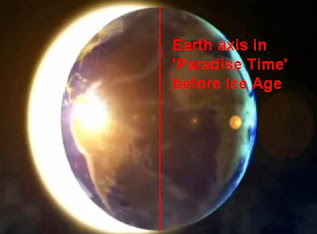 |
William Adolphe Bouguereau (1825 - 1905)
Jeune Fille Repoussant l'Amour (1880) |
[O+S = Ottema Dutch translation 1872 + Sandbach English translation 1876: identical page numbering]
1 [086/01] Denamarka
ÀND SKÁTON HJARA PILA MITH TÁRBARNTIN BOLLUM VP SINRA FLÁTE
[O+S p.119]
en schoten hunne pijlen met brandende terpentijnballen op zijne vloot
and shot their arrows with balls of burning turpentine upon the fleet
2 [086/31] Denamarka
ÀND SKATON HJARA BARN PILLA VPPA THA FINNA DEL
[O+S p.119]
en schoten hunne brandpijlen op de Finnen af
and shot their burning arrows at the Finns
3 [095/16] Brunno
EN PIL HÉDE HJRA BOSME TREFTH
[O+S p.133]
een pijl had haar boezem getroffen
an arrow had penetrated her bosom
4 [119/06] Frethorik
THES NACHTES SKÁTON HJA BARN.PILA ANDA LOFT
[O+S p.163]
des nachts schoten zij brandpijlen in de lucht
at night they shot lighted arrows into the air
5 [128/10] Friso
ÀND SKÁT VNWARLINGA THA BROND INNA SKÉPA
THÉR.I MITH SINA PILUM BIGÁNA KV
[O+S p.175]
en schoot onverhoeds brand in de schepen,
die hij met zijne pijlen bereiken konde
and threw fire into all the ships
that he could reach with his arrows
6 [128/32] Friso
FRISO [...] LÉT THA BÀRN.PILA RING INNA KRÁN.BOGA LIDSA
[O+S p.177]
Friso [...] liet spoedig de brandpijlen op de kraanbogen leggen
Friso [...] immediately had the fire-arrows placed on the crossbows
7 [129/11] Friso
BIFÁRA THA EROSTE PIL DEL FALDE A SEX FÁDEMA FON SIN SKIP
[O+S p.177]
voor dat de eerste pijl op zes vademen van zijn schip neer viel
till the first arrow fell six fathoms from his ship
8 [129/14] Friso
THRVCHDAM VSA PILA MITH WIND MÉI GVNGON
BILÉVON HJA ALLE AN BROND
[O+S p.177]
omdat onze pijlen met den wind medegingen,
bleven zij alle aan den brand
as our arrows went with the wind,
they all remained alight
varieties:
PIL - 3,7
(plural:)
PILA - 1,4,6,8
PILLA - 2
PILUM - 5
(arrow - english)
pil - danish, norwegian, swedish
píla - icelandic
pijl - dutch
pfeil - german
Βέλος (belos) - greek
From etymologiebank.nl/pijl:
Mnl. pile, pijl
eerst in samenstelling in de toenaam van Baldeuino Piliser ‘pijlijzer, pijlpunt’ [1204]
en in de toenaam van Wouter Pile [1227],
dan het zn. in scoten ... pile ‘schoten pijlen’ [1340-60],
alse een pijl uut enen boghe ‘als een pijl uit een boog’ [1350];
Os. pīl;
ohd. pfīl (nhd. Pfeil);
oe. pīl ‘puntig voorwerp’ (ne. pile);
laat-on. píla (nzw. pil).
From etymologiebank.nl/pijler:
Mnl. pijlre ‘muurdam, steunbeer’ [1387],
in den pijlre ‘in de steunbeer’ [1423];
vnnl. De derde pijler vest ‘de derde steunpilaar geeft stevigheid’ [1617],
met pylers en pylaren (bedoeld zijn personen) [1630];
Os. pīliri (mnd. piler);
ohd. pfīlāri ‘id.’ (nhd. Pfeiler);
ofri. pīler (nfri. pylder).
From etymologiebank.nl/pilaar:
Mnl. an twe pilernen ‘aan twee zuilen’ [1276-1300],
aen een pilaer ‘aan een zuil’ [1285],
Dar waren pilaren ende colummen ‘daar waren zuilen en kolommen’ (mv.) [1285].
pillar, pylon - english
pijler, pilaar - dutch
pfeiler - german
pelare - swedish
pilier - french, slovak
pilastro - italian
pilar - spanish, portuguese, catalan
pilari - finnish
pillér - hongarian
pīlārs - latvian
filar - polish
pilíř - chech
piler - welsh
pila - latin
pole, pile, pale - english => see next post
φαλλός (phallos) - greek
phallus - latin
From en.wikipedia/Omphalos:
An omphalos (ὀμφαλός) is a religious stone artifact, or baetylus. In Greek, the word omphalos means "navel" (compare the name of Queen Omphale). According to the ancient Greeks, Zeus sent out two eagles to fly across the world to meet at its center, the "navel" of the world. Omphalos stones used to denote this point were erected in several areas surrounding the Mediterranean Sea; the most famous of those was at the oracle at Delphi. It is also the name of the stone given to Cronus in Zeus' place in Greek mythology.
From en.wikipedia/Axis_mundi:
The axis mundi (also cosmic axis, world axis, world pillar, columna cerului, center of the world,world tree), in religion or mythology, is the world center or the connection between Heaven and Earth. As the celestial pole and geographic pole, it expresses a point of connection between sky and earth where the four compass directions meet.
From W.F. Warren, Paradise Found (1885)
OM, OMME (german "um") = around
OM-POL = OM-PAL = OM-PYL = (anagram) OLYMP
Agartha = ÁG, ÁGA (eye) + JRTHA (earth) = ÁG.JRTHA (earth's eye)






No comments:
Post a Comment